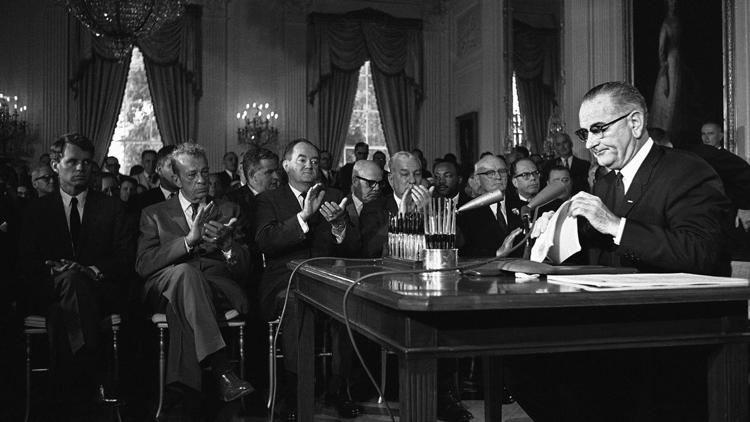WASHINGTON, D.C., USA — On July 2, 1964, United States President Lyndon B. Johnson signed the 1964 Civil Rights Act into law. The ceremony was televised and took place in the White House's East Room.
The act outlawed discrimination on the basis of race, color, religion, sex, or national origin, required equal access to public places and employment, and enforced desegregation of schools and the right to vote.
The Civil Rights Act being signed into law was a pivotal moment in the Civil Rights movement, which began in the 1950s.
The obscene amounts of segregation, discrimination and the unfair treatment of Black people in the U.S. fueled the national civil rights conversation and led to the development of the law.
The landmark 1954 case Brown v. Board of Education is where the U.S. Supreme Court ruled that racial segregation in schools was unconstitutional. This decision set the tone for the movement to push for the equality of Black people permanently.
As History.com explains, Rosa Parks made her debut into history when she refused to surrender her seat to a white man on a city bus in Alabama and got arrested; and Martin Luther King made his renown 'I Have a Dream' speech in Washington all in the years leading up to the signing of the Civil Rights Act.
Prior to July 2, 1964, people of America lived in a literal black-and-white world. As the National Park Service explains, Jim Crow Laws allowed states from Delaware to California, and from North Dakota to Texas, to enforce segregation by punishing people who associated with members of other races. It was a way to maintain racial segregation after the Civil War.
In the Jim Crow era, there were ordinances separating barbershops based on race, limiting where Black people could be buried and making sure Black and white Americans couldn't go to school together. Interracial marriage was prohibited by law. Everything from hospital entrance protocols, housing, libraries, lunch counters, and parks were heavily regulated in the Jim Crow days.
Although Johnson signed the act into law, it was President John F. Kennedy who made the passage of a new civil rights bill one of the platforms of his successful 1960 presidential campaign.
Getting the law through the Senate was an uphill battle all the way up to its approval in July 1964.
Dr. Martin Luther King, Jr. was among the high-profile guests at the White House for its signing. He received one of the pens Johnson used during the history-making moment.
The Civil Rights Act of 1964 paved the way for other historical legislation to be passed such as the Voting Rights Act of 1965, which ensured the protection for the right of Black Americans to vote.
- Miami-Dade mayor: 11 confirmed dead after collapse of Surfside condo, 150 missing
- Miami Herald: Contractor noticed damage underneath pool deck at Surfside condo just before collapse
- In collapsed building's twin, most people are staying put
- Tampa Bay Lightning could join elite list of NHL teams to win back-to-back Stanley Cup championships
- A Frank Conversation: New podcast explores race, religion, politics and more
►Breaking news and weather alerts: Get the free 10 Tampa Bay app
►Stay In the Know! Sign up now for the Brightside Blend Newsletter



